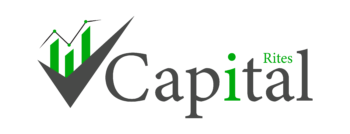
The mortgage industry has evolved dramatically over the past decades. With new technology and changing consumer demands, the mortgage options of today are vastly different from those of the past. Let’s explore how these shifts are creating uncharted territories in home financing.
The Evolution of Mortgages: From Traditional to Technological
- Mortgages have traditionally been handled through brick-and-mortar banks and financial institutions. However, the landscape has changed with digital platforms streamlining the process.
- From traditional loans to the rise of online lenders, the transformation has made securing a mortgage faster, more efficient, and accessible.
A Journey Through Time: How Mortgages Have Changed
- Traditional mortgage models required in-person visits, extensive paperwork, and long approval processes.
- Today, digital platforms allow borrowers to apply from home, track progress, and access a broader range of options.
The Impact of Technology on the Mortgage Process
- Technology has introduced digital tools that simplify mortgage applications and approval.
- AI-powered systems assess creditworthiness, automate documentation, and streamline approval, reducing human error and improving efficiency.
The Need for New Approaches in Mortgage Options
- The financial needs and goals of consumers are shifting, with many seeking flexible and innovative solutions.
- As the mortgage market adapts to these new needs, alternative products and approaches are gaining traction.
Market Shifts and Changing Consumer Needs
- Consumers are more informed than ever before and expect transparency, speed, and customization in their mortgage experience.
- Homebuyers now prefer flexible terms, low-interest rates, and mortgages that align with their lifestyles and environmental values.
How Demographic Changes Are Influencing Mortgages
- Millennials and Gen Z are now the largest group of homebuyers, and their preferences are reshaping the market.
- Younger generations are looking for mortgages that cater to their financial realities, such as student debt or freelance income.
Navigating the New Age Mortgage Options
The mortgage market is more diverse than ever. From digital platforms to environmentally conscious loan options, these new-age mortgage products cater to a broad range of borrower needs.
The Rise of Digital and Online Mortgages
- Digital mortgages have rapidly transformed the lending process. Applying for a mortgage online has become commonplace, reducing paperwork and time delays.
Benefits of Digital Mortgage Platforms

- Convenience: Borrowers can apply from anywhere at any time.
- Transparency: Online platforms often provide clear, easy-to-understand information about loan options and rates.
Exploring the Pros and Cons of E-Mortgages
- Pros: Fast processing, real-time updates, and a streamlined experience.
- Cons: Limited face-to-face interaction, which some borrowers might find valuable for guidance.
Key Players in the Digital Mortgage Space
- Companies like Rocket Mortgage and Better.com are leading the way in transforming how consumers access home financing.
- These platforms offer competitive rates, quick processing times, and user-friendly applications.
Green and Sustainable Mortgages
- With growing concern for the environment, green mortgages are becoming increasingly popular, catering to buyers who want to make eco-friendly home choices.
The Growing Demand for Eco-Friendly Homes
- Homebuyers are prioritizing energy-efficient homes, and lenders are responding by offering products that align with sustainable living goals.
- Green mortgages help homeowners finance energy-efficient upgrades and reduce their carbon footprint.
Understanding Green Mortgages and Their Advantages
- These loans often come with lower interest rates or tax incentives for purchasing energy-efficient homes.
- Borrowers can finance solar panels, energy-efficient appliances, and other eco-friendly home upgrades.
Key Financial Institutions Offering Sustainable Loans
- Lenders like Fannie Mae and the Federal Housing Administration offer specialized green mortgage programs.
- Many private banks are also developing their own green lending programs.
Adjustable-Rate Mortgages in the New Era
- ARMs, which offer initial low rates before adjusting over time, are becoming more attractive as borrowers seek lower payments upfront.
What Makes ARMs Attractive in Today’s Market?
- ARMs offer lower initial rates compared to fixed-rate mortgages, which can be advantageous in the short term.
- These loans can be ideal for homeowners who plan to sell or refinance before the interest rate adjusts.
How to Leverage an ARM in a Low-Interest Environment
- With interest rates historically low, locking in a low initial rate can provide significant savings in the early years of a mortgage.
Risks and Rewards: Managing Uncertainty with ARMs
- While ARMs offer initial savings, future interest rate hikes could lead to higher payments.
- Borrowers should evaluate their financial stability and long-term plans before committing to an ARM.
Understanding Non-Traditional Mortgage Products
Non-traditional mortgage products are on the rise, offering new opportunities for homebuyers who may not fit the typical borrower profile.
Interest-Only Mortgages: Are They Still Relevant?
- Interest-only mortgages allow borrowers to pay only interest for a set period before they begin paying off the principal.
Benefits for Homeowners in Financial Transition
- Interest-only loans can be beneficial for those in financial transition, such as self-employed individuals or those expecting a future increase in income.
- They provide lower initial payments, allowing for easier cash flow management.
Hidden Risks and Long-Term Implications
- After the interest-only period ends, the mortgage payments can increase significantly.
- Borrowers must carefully consider their long-term financial outlook before choosing this option.
Reverse Mortgages: An Evolving Option for Seniors
- Reverse mortgages allow seniors to tap into their home equity to fund retirement, but the products have become more nuanced in recent years.
The Mechanics of Reverse Mortgages Explained
- A reverse mortgage converts the equity in a home into a loan, with no repayment required until the homeowner sells or passes away.
- The loan balance grows over time as interest accumulates.
New Regulations and Their Impact on Reverse Mortgages
- Stricter regulations and better consumer protections have been implemented to ensure seniors are not overburdened by debt.
Are Reverse Mortgages a Safe Financial Solution?
- While useful for some, reverse mortgages are complex and come with significant long-term consequences that should be fully understood before committing.
Shared Equity and Crowdfunding Mortgages
- Non-traditional mortgage structures like shared equity and crowdfunding are gaining popularity among first-time buyers and investors.
How Shared Equity Mortgages Are Shaping Homeownership
- Shared equity mortgages allow borrowers to co-own their property with an investor, reducing the upfront financial burden.
Exploring the Crowdfunding Approach in Property Investment
- Crowdfunding offers a way for multiple investors to pool resources to finance a home or real estate project.
Legal and Regulatory Considerations in Shared Ownership Models
- These models are still new and often face unique legal challenges, such as determining ownership shares and handling future property sales.
The Role of Alternative Lenders in the Mortgage Market
Alternative lending platforms are providing more options for homebuyers, breaking the traditional bank-dominated mortgage landscape.
Peer-to-Peer Lending: A New Way to Fund Your Home
- Peer-to-peer (P2P) lending allows individuals to borrow from other individuals rather than traditional financial institutions.
How Peer-to-Peer Mortgages Work in the Current Landscape
- Borrowers apply for loans directly from investors through online platforms, with terms that are often more flexible than those offered by banks.
The Advantages of Borrowing from Individual Investors
- P2P lenders may offer lower rates or more personalized loan terms than traditional institutions.
Risks Associated with Peer-to-Peer Mortgages
- Investors assume the risk, and if a borrower defaults, they may lose their investment.
Fintech Companies and Their Impact on Home Loans
- Fintech companies are increasingly entering the mortgage space, offering streamlined processes and innovative products.
How Fintech Is Revolutionizing the Home Loan Process
- These companies use cutting-edge technology, including AI and machine learning, to assess risk and approve loans faster.
The Growing Influence of Robo-Advisors in Mortgage Decisions
- Robo-advisors use algorithms to guide borrowers toward the best mortgage products based on their financial situation and goals.
Evaluating the Credibility and Security of Fintech Lenders
- As the fintech sector grows, consumers should carefully evaluate the legitimacy of online lenders to avoid potential scams.









